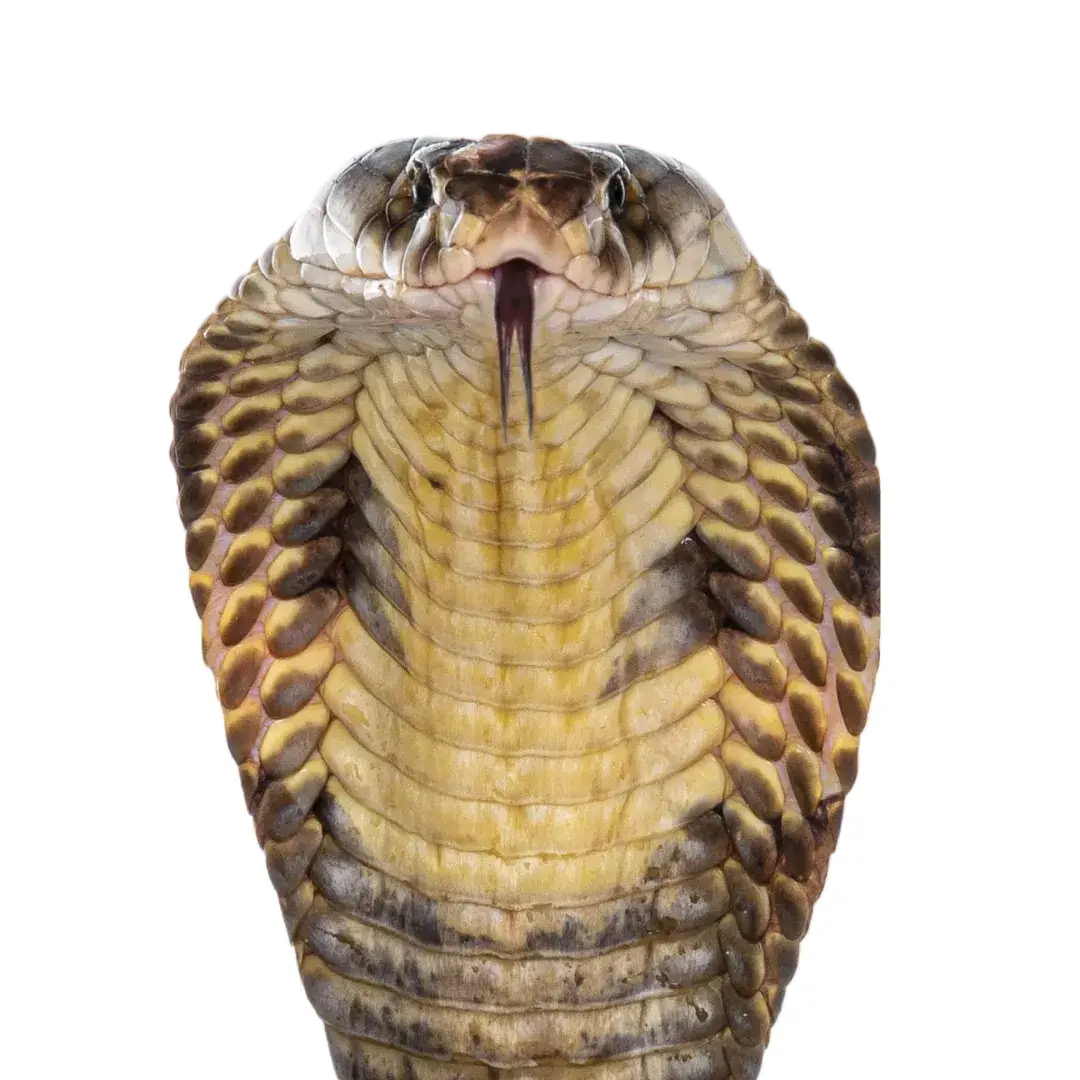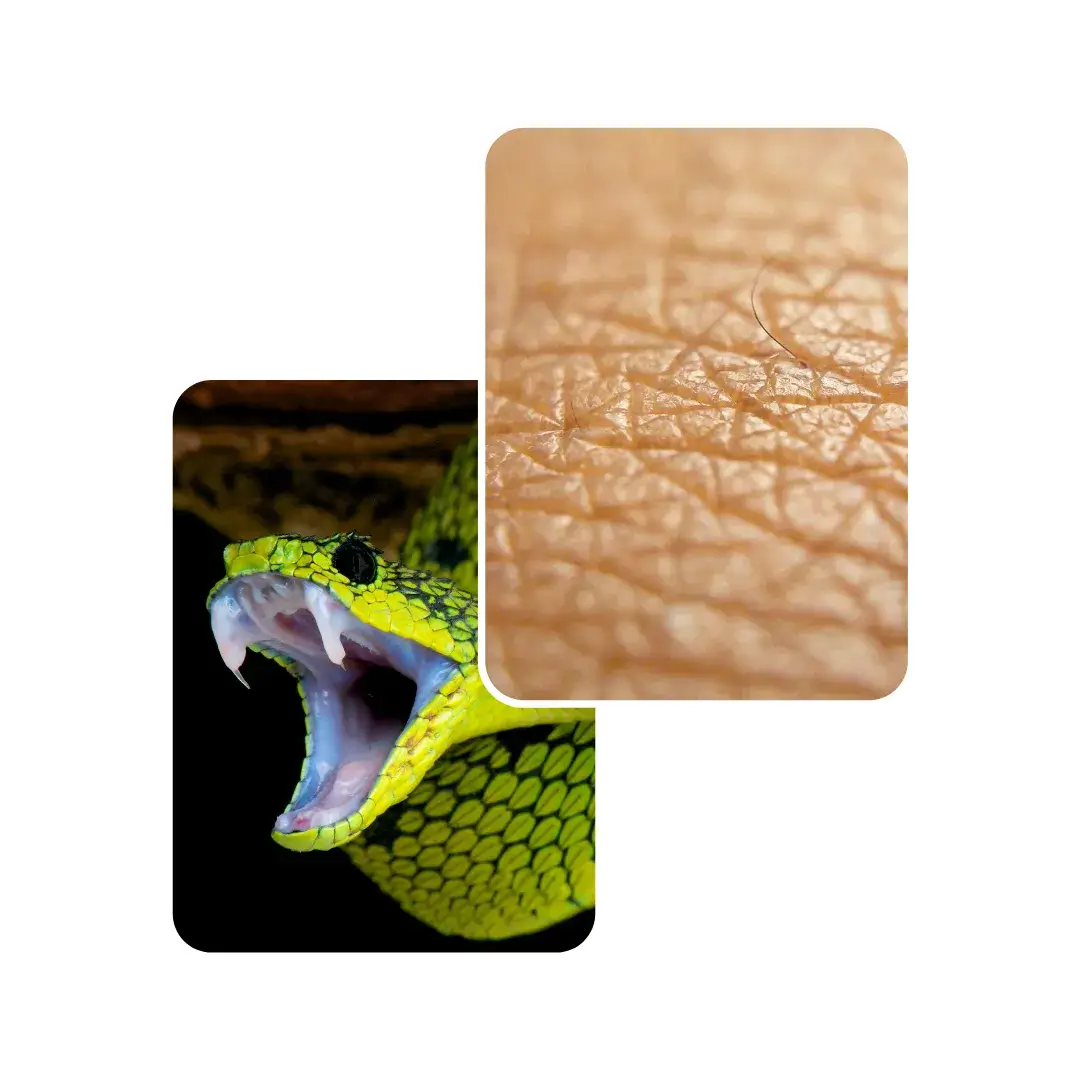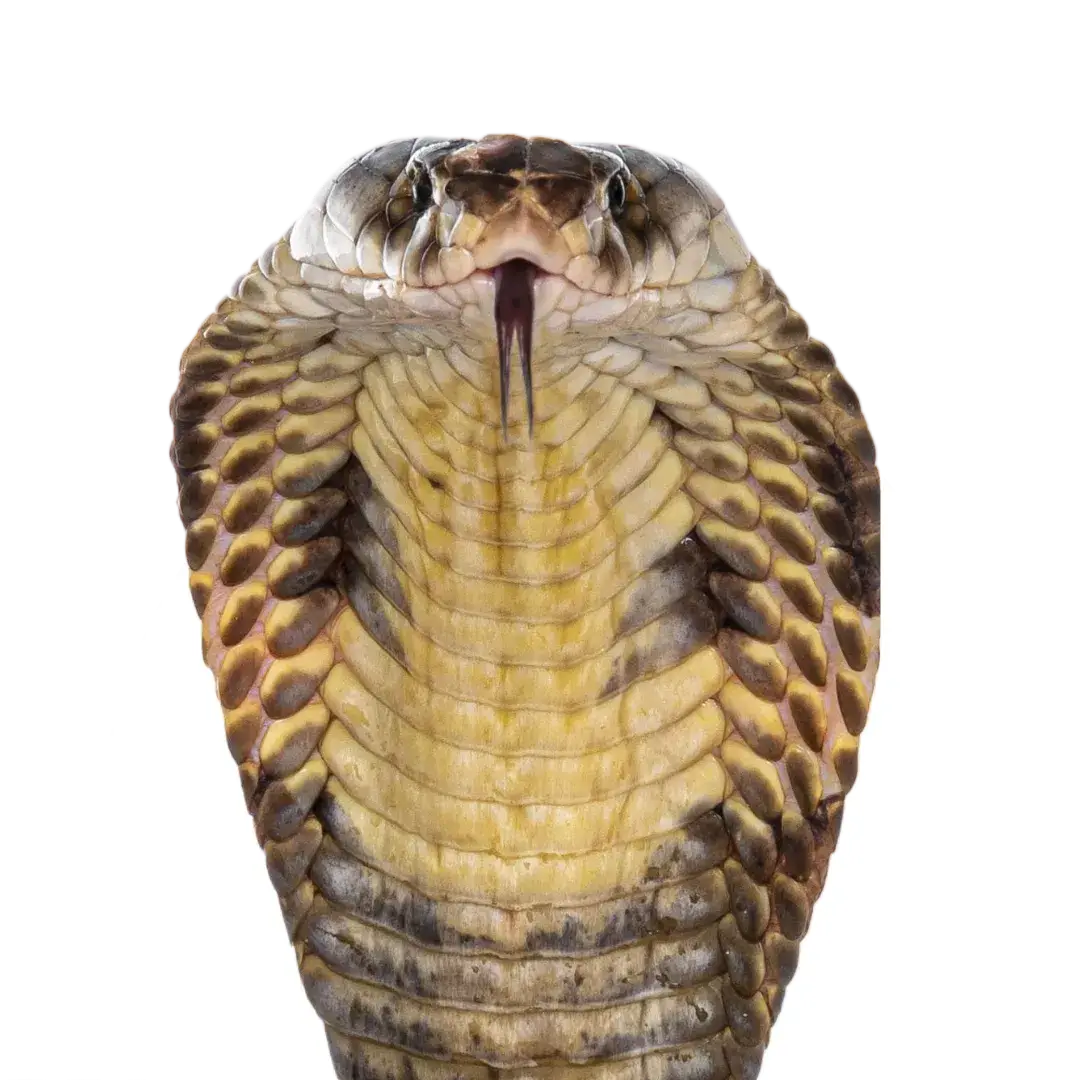

The sudden appearance of discolored scales (brown, red, green, or yellow) on the belly or lower sides, a hallmark sign of scale rot.
The clear scale over the eye is retained after shedding (appears cloudy or dull), leading to discomfort and eventual blindness if not removed expertly.
The snake spends prolonged, abnormal periods soaking in its water bowl, a common, desperate attempt to drown mites or loosen retained skin.
The skin appears dry, abnormally thick, or has a flaky texture, often related to systemic illness or environmental issues.
Shed skin is fragmented, peeling in small pieces, or remains stuck to the body for an extended period, signaling a humidity/hydration failure.
Tiny black or red dots (the parasites) visible on the skin, often concentrating around the eyes, chin and vent. White, flaky debris in the water bowl is mite waste.
Refusal to eat and severe inactivity, indicating the dermatological issue has progressed to a painful, systemic illness.
Yes. It's an open door. Once the infection penetrates the scale barrier, it can rapidly infect the bone or enter the bloodstream, causing fatal septicemia.
Absolutely not. Household products are toxic to snakes. Mites require specific, safe veterinary-grade pesticides and environmental decontamination.
No. While occasional soaking is normal, prolonged soaking is a clear sign of distress, usually trying to remove mites or retained shed. It means a problem exists.
Attempting to peel the eye cap risks tearing the eye, causing severe, permanent damage and is extremely painful. This is strictly a veterinary procedure.
Dermatological issues require patience. Antibiotic courses can last 4–6 weeks, and the skin may not look fully recovered until after the next one or two healthy sheds.
Yes. Severe dermatological problems are often the first visible symptom of a profound, hidden systemic illness, such as a serious viral infection.
Your pet deserves expert care – Subscribe now for trusted tips and updates from our pet experts.
